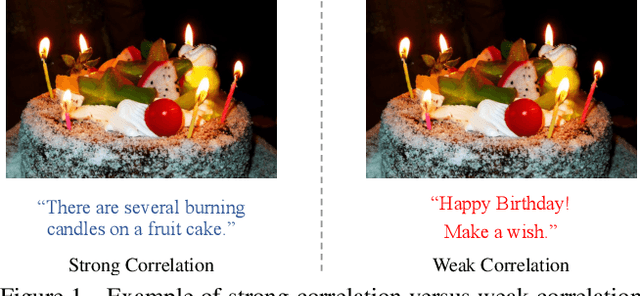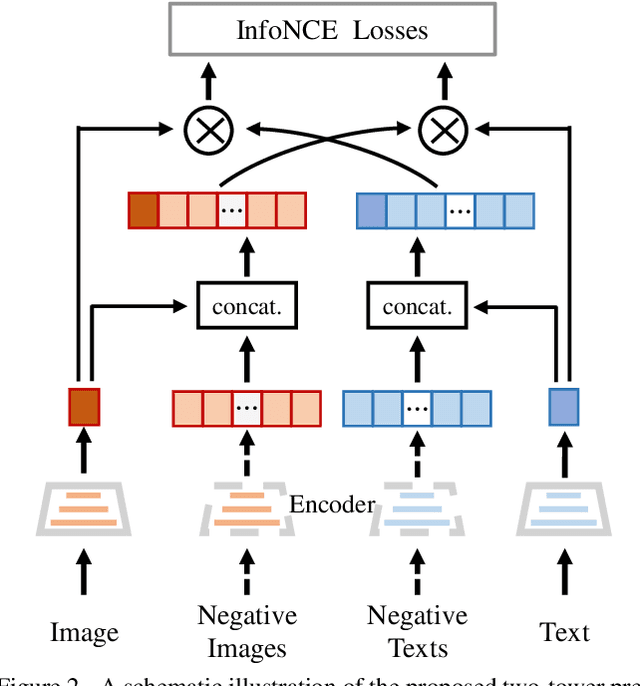Yingyan Li
DriveVLA-W0: World Models Amplify Data Scaling Law in Autonomous Driving
Oct 14, 2025Abstract:Scaling Vision-Language-Action (VLA) models on large-scale data offers a promising path to achieving a more generalized driving intelligence. However, VLA models are limited by a ``supervision deficit'': the vast model capacity is supervised by sparse, low-dimensional actions, leaving much of their representational power underutilized. To remedy this, we propose \textbf{DriveVLA-W0}, a training paradigm that employs world modeling to predict future images. This task generates a dense, self-supervised signal that compels the model to learn the underlying dynamics of the driving environment. We showcase the paradigm's versatility by instantiating it for two dominant VLA archetypes: an autoregressive world model for VLAs that use discrete visual tokens, and a diffusion world model for those operating on continuous visual features. Building on the rich representations learned from world modeling, we introduce a lightweight action expert to address the inference latency for real-time deployment. Extensive experiments on the NAVSIM v1/v2 benchmark and a 680x larger in-house dataset demonstrate that DriveVLA-W0 significantly outperforms BEV and VLA baselines. Crucially, it amplifies the data scaling law, showing that performance gains accelerate as the training dataset size increases.
Unified Vision-Language-Action Model
Jun 24, 2025Abstract:Vision-language-action models (VLAs) have garnered significant attention for their potential in advancing robotic manipulation. However, previous approaches predominantly rely on the general comprehension capabilities of vision-language models (VLMs) to generate action signals, often overlooking the rich temporal and causal structure embedded in visual observations. In this paper, we present UniVLA, a unified and native multimodal VLA model that autoregressively models vision, language, and action signals as discrete token sequences. This formulation enables flexible multimodal tasks learning, particularly from large-scale video data. By incorporating world modeling during post-training, UniVLA captures causal dynamics from videos, facilitating effective transfer to downstream policy learning--especially for long-horizon tasks. Our approach sets new state-of-the-art results across several widely used simulation benchmarks, including CALVIN, LIBERO, and Simplenv-Bridge, significantly surpassing previous methods. For example, UniVLA achieves 95.5% average success rate on LIBERO benchmark, surpassing pi0-FAST's 85.5%. We further demonstrate its broad applicability on real-world ALOHA manipulation and autonomous driving.
TC-Light: Temporally Consistent Relighting for Dynamic Long Videos
Jun 23, 2025Abstract:Editing illumination in long videos with complex dynamics has significant value in various downstream tasks, including visual content creation and manipulation, as well as data scaling up for embodied AI through sim2real and real2real transfer. Nevertheless, existing video relighting techniques are predominantly limited to portrait videos or fall into the bottleneck of temporal consistency and computation efficiency. In this paper, we propose TC-Light, a novel paradigm characterized by the proposed two-stage post optimization mechanism. Starting from the video preliminarily relighted by an inflated video relighting model, it optimizes appearance embedding in the first stage to align global illumination. Then it optimizes the proposed canonical video representation, i.e., Unique Video Tensor (UVT), to align fine-grained texture and lighting in the second stage. To comprehensively evaluate performance, we also establish a long and highly dynamic video benchmark. Extensive experiments show that our method enables physically plausible relighting results with superior temporal coherence and low computation cost. The code and video demos are available at https://dekuliutesla.github.io/tclight/.
End-to-End Driving with Online Trajectory Evaluation via BEV World Model
Apr 02, 2025Abstract:End-to-end autonomous driving has achieved remarkable progress by integrating perception, prediction, and planning into a fully differentiable framework. Yet, to fully realize its potential, an effective online trajectory evaluation is indispensable to ensure safety. By forecasting the future outcomes of a given trajectory, trajectory evaluation becomes much more effective. This goal can be achieved by employing a world model to capture environmental dynamics and predict future states. Therefore, we propose an end-to-end driving framework WoTE, which leverages a BEV World model to predict future BEV states for Trajectory Evaluation. The proposed BEV world model is latency-efficient compared to image-level world models and can be seamlessly supervised using off-the-shelf BEV-space traffic simulators. We validate our framework on both the NAVSIM benchmark and the closed-loop Bench2Drive benchmark based on the CARLA simulator, achieving state-of-the-art performance. Code is released at https://github.com/liyingyanUCAS/WoTE.
Enhancing End-to-End Autonomous Driving with Latent World Model
Jun 12, 2024



Abstract:End-to-end autonomous driving has garnered widespread attention. Current end-to-end approaches largely rely on the supervision from perception tasks such as detection, tracking, and map segmentation to aid in learning scene representations. However, these methods require extensive annotations, hindering the data scalability. To address this challenge, we propose a novel self-supervised method to enhance end-to-end driving without the need for costly labels. Specifically, our framework \textbf{LAW} uses a LAtent World model to predict future latent features based on the predicted ego actions and the latent feature of the current frame. The predicted latent features are supervised by the actually observed features in the future. This supervision jointly optimizes the latent feature learning and action prediction, which greatly enhances the driving performance. As a result, our approach achieves state-of-the-art performance in both open-loop and closed-loop benchmarks without costly annotations.
Fully Sparse Fusion for 3D Object Detection
Apr 25, 2023



Abstract:Currently prevalent multimodal 3D detection methods are built upon LiDAR-based detectors that usually use dense Bird's-Eye-View (BEV) feature maps. However, the cost of such BEV feature maps is quadratic to the detection range, making it not suitable for long-range detection. Fully sparse architecture is gaining attention as they are highly efficient in long-range perception. In this paper, we study how to effectively leverage image modality in the emerging fully sparse architecture. Particularly, utilizing instance queries, our framework integrates the well-studied 2D instance segmentation into the LiDAR side, which is parallel to the 3D instance segmentation part in the fully sparse detector. This design achieves a uniform query-based fusion framework in both the 2D and 3D sides while maintaining the fully sparse characteristic. Extensive experiments showcase state-of-the-art results on the widely used nuScenes dataset and the long-range Argoverse 2 dataset. Notably, the inference speed of the proposed method under the long-range LiDAR perception setting is 2.7 $\times$ faster than that of other state-of-the-art multimodal 3D detection methods. Code will be released at \url{https://github.com/BraveGroup/FullySparseFusion}.
Densely Constrained Depth Estimator for Monocular 3D Object Detection
Jul 21, 2022



Abstract:Estimating accurate 3D locations of objects from monocular images is a challenging problem because of lacking depth. Previous work shows that utilizing the object's keypoint projection constraints to estimate multiple depth candidates boosts the detection performance. However, the existing methods can only utilize vertical edges as projection constraints for depth estimation. So these methods only use a small number of projection constraints and produce insufficient depth candidates, leading to inaccurate depth estimation. In this paper, we propose a method that utilizes dense projection constraints from edges of any direction. In this way, we employ much more projection constraints and produce considerable depth candidates. Besides, we present a graph matching weighting module to merge the depth candidates. The proposed method DCD (Densely Constrained Detector) achieves state-of-the-art performance on the KITTI and WOD benchmarks. Code is released at https://github.com/BraveGroup/DCD.
B-PROP: Bootstrapped Pre-training with Representative Words Prediction for Ad-hoc Retrieval
May 17, 2021



Abstract:Pre-training and fine-tuning have achieved remarkable success in many downstream natural language processing (NLP) tasks. Recently, pre-training methods tailored for information retrieval (IR) have also been explored, and the latest success is the PROP method which has reached new SOTA on a variety of ad-hoc retrieval benchmarks. The basic idea of PROP is to construct the \textit{representative words prediction} (ROP) task for pre-training inspired by the query likelihood model. Despite its exciting performance, the effectiveness of PROP might be bounded by the classical unigram language model adopted in the ROP task construction process. To tackle this problem, we propose a bootstrapped pre-training method (namely B-PROP) based on BERT for ad-hoc retrieval. The key idea is to use the powerful contextual language model BERT to replace the classical unigram language model for the ROP task construction, and re-train BERT itself towards the tailored objective for IR. Specifically, we introduce a novel contrastive method, inspired by the divergence-from-randomness idea, to leverage BERT's self-attention mechanism to sample representative words from the document. By further fine-tuning on downstream ad-hoc retrieval tasks, our method achieves significant improvements over baselines without pre-training or with other pre-training methods, and further pushes forward the SOTA on a variety of ad-hoc retrieval tasks.
WenLan: Bridging Vision and Language by Large-Scale Multi-Modal Pre-Training
Mar 19, 2021



Abstract:Multi-modal pre-training models have been intensively explored to bridge vision and language in recent years. However, most of them explicitly model the cross-modal interaction between image-text pairs, by assuming that there exists strong semantic correlation between the text and image modalities. Since this strong assumption is often invalid in real-world scenarios, we choose to implicitly model the cross-modal correlation for large-scale multi-modal pre-training, which is the focus of the Chinese project `WenLan' led by our team. Specifically, with the weak correlation assumption over image-text pairs, we propose a two-tower pre-training model called BriVL within the cross-modal contrastive learning framework. Unlike OpenAI CLIP that adopts a simple contrastive learning method, we devise a more advanced algorithm by adapting the latest method MoCo into the cross-modal scenario. By building a large queue-based dictionary, our BriVL can incorporate more negative samples in limited GPU resources. We further construct a large Chinese multi-source image-text dataset called RUC-CAS-WenLan for pre-training our BriVL model. Extensive experiments demonstrate that the pre-trained BriVL model outperforms both UNITER and OpenAI CLIP on various downstream tasks.
 Add to Chrome
Add to Chrome Add to Firefox
Add to Firefox Add to Edge
Add to Edge